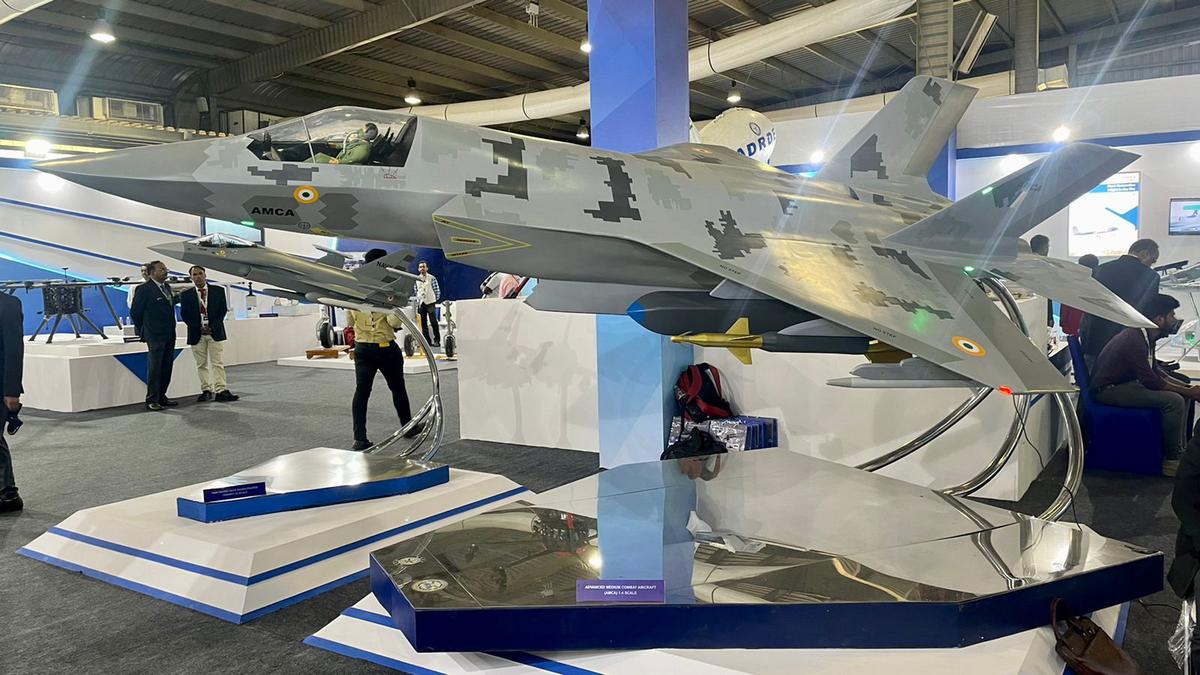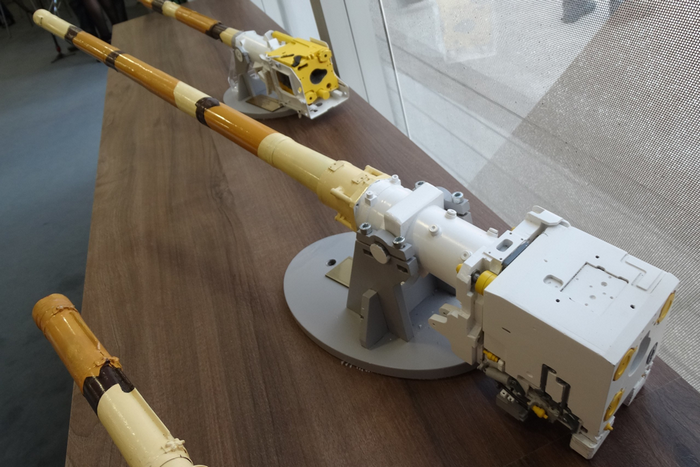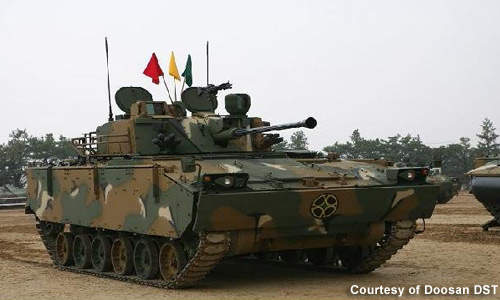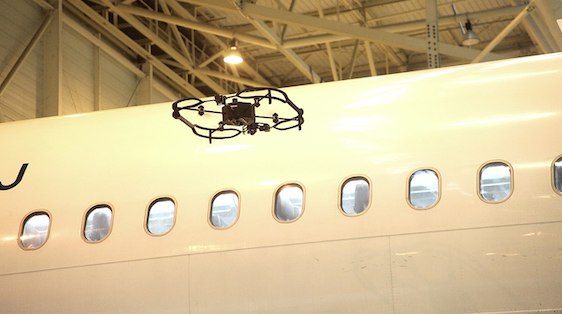SOURCE: RAUNAK KUNDE / NEWS BEAT / IDRW.ORG

India’s ambitious 5th generation Advanced Medium Combat Aircraft (AMCA) program is on the verge of a crucial milestone as the Ministry of Defence (MoD) is set to decide on the selection of an engine partner. This crucial step is expected to occur before the program receives official clearance from the Cabinet Committee on Security (CCS).
The Aeronautical Development Agency (ADA) and the Indian Air Force (IAF) have already determined that the AMCA program will consist of two variants: the MkI variant, which will be powered by the older F-414 engine, and the MkII variant, which will require a new 110-kN class engine.
Continue readingSOURCE: RAUNAK KUNDE / NEWS BEAT / IDRW.ORG
The Gas Turbine Research Establishment (GTRE) has made significant progress in addressing the major issues associated with the Dry Kaveri engine, which is slated for use on the proposed Unmanned Aerial Strike Attack Platform that India plans to develop alongside its AMCA 5th generation fighter jet. The Dry Kaveri engine, expected to provide a thrust of 46-48kN, has undergone substantial refinements, and further enhancements are in the pipeline, with engine deliveries planned to commence in 2024.
Insiders familiar with the matter have revealed that the new Dry Kaveri engine, to be manufactured by Godrej Aerospace, will be subjected to performance evaluation across various flight regimes, including high-altitude trials. These trials will serve as crucial milestones in assessing the engine’s capabilities and ensuring its suitability for a wide range of operational scenarios.
Continue readingSOURCE: RAUNAK KUNDE / NEWS BEAT / IDRW.ORG

Dassault Aviation, the renowned French aircraft manufacturer, has extended its support to India in the development of a 26-ton Twin Engine Deck Based Fighter (TEDBF) for the Indian Navy. The TEDBF is intended to replace the Russian-origin MiG-29K fighter jets currently in service on India’s aircraft carriers. Dassault, which is already in the running to supply the Indian Navy with 26 Rafale M carrier-based fighter jets, has offered its expertise in the development of the TEDBF.
The Indian Navy’s MiG-29K fleet has been facing challenges in terms of maintenance and logistical issues, prompting the need for a reliable and advanced replacement. Dassault, with its experience in developing the carrier-based Rafale M fighter jet, is well-positioned to provide valuable assistance to India in the development of the TEDBF but it is unclear if India will be interested in taking help from Dassault.
Continue readingSOURCE: RAUNAK KUNDE / NEWS BEAT / IDRW.ORG

The Combat Vehicles Research & Development Establishment (CVRDE), a prestigious institution under the Defense Research and Development Organization (DRDO), has embarked on an ambitious plan to develop a nuclear-powered engine for ground vehicle applications.
Collaboration likely with the Bhabha Atomic Research Centre (BARC), CVRDE aims to create a compact and lightweight nuclear reactor that can serve as a mobile power source for military applications. While this concept may seem far-fetched, the idea of nuclear-powered ground vehicles has been around for several decades, with recent studies highlighting the potential of thorium-based micro-reactors and atomic batteries as alternatives.
Continue readingSOURCE: RAUNAK KUNDE / NEWS BEAT / IDRW.ORG

The Ministry of Defence, Government of India, has issued a Request for Information (RFI) for the procurement of an Air Defence Gun Missile System (Self Propelled) (ADGM Sys (SP)). The system is intended to provide close air defence protection to mechanized formations against evolving and dynamic air threats.
The Indian Army’s Air Defence division requires the ADGM Sys (SP) as a Mobile Terminal Air Defence System, capable of operating in various terrains and embedded within their maneuvers and tactical operations.
Continue readingSOURCE: RAUNAK KUNDE / NEWS BEAT / IDRW.ORG

The Armament Research & Development Establishment (ARDE) has announced its plans to develop an advanced main gun for the Next Generation Main Battle Tank (NGMBT).
This new main gun will incorporate cutting-edge features, including autonomous threat engagement, electro-mechanical gun stabilization technology, self-obturating breech mechanism, and threat-based ammunition selection. With the potential development of a 120mm smoothbore gun, ARDE aims to equip the NGMBT with state-of-the-art firepower and capabilities.
Continue readingSOURCE: RAUNAK KUNDE / NEWS BEAT / IDRW.ORG

India is gearing up to conduct the first flight test of a tube-launched loitering munition, which was showcased by a private sector drone startup company based in Bengaluru at last year’s Defence Expo. The manufacturer plans to launch the munition from a disposable tube launcher that can be easily equipped with a serviceman’s gear.
This lightweight munition, weighing less than 7 kilograms, is designed for a range of over 30 kilometres and has an impressive endurance of 45-60 minutes. It can be armed with high-explosive anti-tank (HEAT) and thermobaric warheads, making it a versatile and effective weapon system.
Continue readingSOURCE: RAUNAK KUNDE / NEWS BEAT / IDRW.ORG
The Defence Research and Development Organization (DRDO) has embarked on a crucial phase of trials for the Astra MkII Beyond Visual Range Air-to-Air Missile (BVRAAM). Carriage trials and testing of the Dual Pulse rocket motor, a key component of the missile’s propulsion system have been completed.
As part of the ongoing development process, nearly ten units of the Astra MkII BVRAAM are currently under fabrication to be utilized for full-scale developmental trials. These trials are scheduled to commence soon, and efforts are being made to optimize the missile’s performance further through software and hardware upgrades. By fine-tuning various aspects of the missile, DRDO aims to extend its range beyond the already impressive 160km.
Continue readingSOURCE: RAUNAK KUNDE / NEWS BEAT / IDRW.ORG

The Defense Research and Development Organization (DRDO) and Hindustan Aeronautics Limited (HAL) have reached an important decision regarding the development of the Advanced Medium Combat Aircraft (AMCA) prototypes.
It has been agreed that private sector companies will play a significant role in the construction of these prototypes, and they will also be involved in the assembly of the jets before a special purpose vehicle (SPV) is established to engage Indian industries on a large scale.
Continue readingSOURCE: RAUNAK KUNDE / NEWS BEAT / IDRW.ORG

The Armament Research & Development Establishment (ARDE) has recently unveiled its ambitious plans to develop a Gatling Air Defence Gun that incorporates cutting-edge technologies. This advanced gun system, equipped with EO/IR (Electro-Optical/Infrared) and radar-based tracking and targeting systems, will utilize artificial intelligence (AI) for optimal weapon selection and autonomous engagements.
Designed using state-of-the-art materials and technologies, the gun system aims to provide 360-degree coverage and act as a close-in weapon system to defend military watercraft against various threats, including aircraft, missiles, and small boats.
Continue readingSOURCE: JOYDEEP GHOSH/ FOR MY TAKE / IDRW.ORG
The Philippines is an island nation, comprising thousands of islands surrounded by sea on all sides. It has the Pacific Ocean in the east and the South China Sea in the west. Philippines was the scene of some of the biggest battles at sea that were fought during World War II. These include Leyete Gulf, Mariana, and the Coral Sea around the Philippines. Though these battles are known as battles of battleships and aircraft carriers; but submarines too played very crucial roles in these battles.
After the victory of the USA in World War II, it captured the Philippines; and deployed its forces for decades, especially during Cold War. After the end of the Cold War, when the USA withdrew its forces from the Philippines; the country slowly started building its forces but surprisingly it left the submarine arm untouched till date.
Continue readingSOURCE: RAUNAK KUNDE / NEWS BEAT / IDRW.ORG

India is set to embark on a significant naval undertaking with the development of a new diesel-electric submarine under Project 76. The Warship Design Bureau (WDB) and Mazagon Dock Shipbuilders Limited (MDL) have been entrusted with the responsibility of designing this cutting-edge submarine, which will incorporate the latest Indian-made technologies.
Project 76 represents an in-house endeavour, showcasing India’s commitment to self-reliance and indigenous defence production. The project aims to leverage advanced Indian technologies, including Ship and Weapon Control Systems, Air-Independent Propulsion (AIP), Lithium-ion batteries, sensors, and other domestically developed systems. By utilizing these state-of-the-art technologies, the new submarine will boast enhanced operational capabilities and performance.
Continue readingSOURCE: RAUNAK KUNDE / NEWS BEAT / IDRW.ORG

South Korea’s Hanwha Defense has confirmed its participation in the bidding process for India’s Futuristic Infantry Combat Vehicle (FICV) project. The company has offered its advanced K21 next-generation infantry fighting vehicle (NIFV) with complete Transfer of Technology (ToT) for local manufacturing in India. This move comes as the Indian Army plans to replace its aging fleet of Soviet Union-era BMP-1 and BMP-2 infantry combat vehicles (ICVs) with modern and technologically advanced FICVs.
Earlier this year, the Defence Acquisition Council (DAC) of India, chaired by Defence Minister Rajnath Singh, approved the procurement of 1,750 FICVs for the Indian Army. The Ministry of Defence (MoD) specified that the FICV should possess amphibious capabilities and be equipped with a manned turret featuring a future combat system (FCS) along with fire-and-forget top-attack anti-tank guided missiles (ATGMs).
Continue readingSOURCE: RAUNAK KUNDE / NEWS BEAT / IDRW.ORG

The Indian Air Force (IAF) is set to revolutionize its maintenance operations by incorporating automated inspection drones into its base maintenance procedures. These cutting-edge drones will play a vital role in improving the efficiency, reliability, and accuracy of visual inspections conducted on transport aircraft and fighter jets, thereby optimizing maintenance activities.
To achieve this innovative advancement, the IAF is collaborating with an Indian drone startup to develop an automated inspection drone equipped with advanced analysis algorithms specifically designed for defect detection.
Continue readingSOURCE: RAUNAK KUNDE / NEWS BEAT / IDRW.ORG

France has shown a keen interest in collaborating with India on its ambitious plan to manufacture three advanced nuclear attack submarines for the Indian Navy. As part of this collaboration, France has offered India non-nuclear systems and subsystems from its own SSN (nuclear attack submarine) program.
Talks are currently underway at the National Security Advisor (NSA) level, with Ajit Doval leading the discussions on the nuclear submarine cooperation between India and France. One of the key components being discussed is the pump-jets propulsor, which holds great importance for submarine operations.
Continue reading